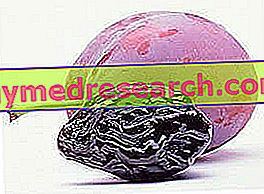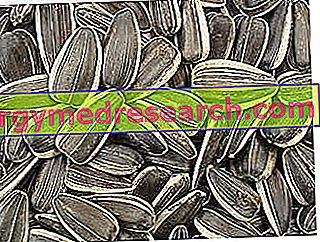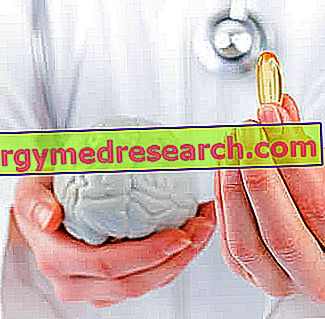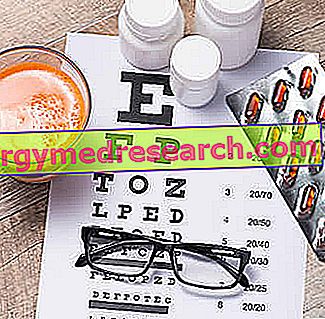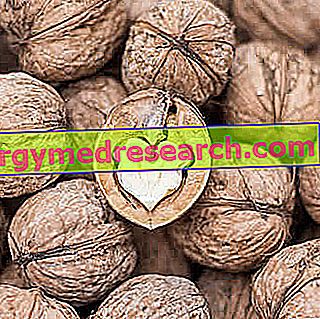Edited by Andrea De Lucchi The 13 Rules of Time Feeding The principles of chrono-feeding can be summarized in the following rules of behavior, observing which it is possible to reduce body weight following the biological rhythms of our organism. 1) The meal times, as well as their quantity and composition, must also be chosen based on the individual tendency to fuel more in the morning or afternoon: the morning type, for example, will have a hearty breakfast after waking up, while the nocturnal one may delay the intake of the first solid foods to the mid-morning snack
Category nutrition and health
Healthy Eating: What Does It Mean? When we talk about "eating healthy" we generally mean the habit of eating in a balanced, clean and healthy way. However, due to the influence of various schools of thought that often oppose traditional scientific-academic research, or simply try to modify it (in a more or less legitimate way), the concept of healthy eating is becoming increasingly blurred and difficult to classify
What are melanoidins? Melanoidins are colloidal molecules having a benzoic ring that are formed by Maillard reaction during cooking of foods containing sugars and amino acids; they have a dark brown color and a characteristic aroma of foods such as freshly baked bread, roasted coffee, toasted malt for beer production etc
Description of the Method The Kousmine method is a diet system based on the experience that Dr. Catherine Kousmine has gained in terms of nutritional insights and applications. The Soviet researcher - born in 1904 in Hvalynsky, and qualified in medicine at the University of Lausanne (Switzerland) - dedicated her life (ended in 1992) to finding ways to fight cancer, degenerative and autoimmune diseases, by feeding; right from the start, in her experiments with mice (and later also on humans), Dr
Magnesium Magnesium is an essential trace element of cellular homeostasis; it seems that its presence in food is quite widespread, especially in plants, and in physiological conditions no food shortages are known; the magnesium deficiency (induced or in any case secondary to other disorders) is manifested by an alteration in the metabolism of calcium, sodium and potassium, which results in muscle weakness, impaired cardiac function and tetanic crises
In collaboration with Dr. Eleonora Roncarati Chemical-physical composition According to the laws, honey is essentially composed of different sugars, especially glucose and fructose, water, as well as organic acids, enzymes, and solid particles from the collection of nectar. SUGARS: they represent more than 95% of the dry matter of honey and therefore are the substances that for the most part determine the physical properties such as viscosity, hygroscopicity, physical state (liquid or crystallized)
The new cooking technologies are distinguished by different principles and processing techniques. Magnetic induction cooking principle It is practiced by means of a glass or ceramic plate below which an electronic generator is positioned which transforms the ordinary current into high-frequency current, 25, 000-50, 000 Hertz; this current is conveyed in a spiral copper coil which generates a magnetic head of great intensity
What are Article by Ivan Mercolini What are junk food? The existence of some foods that are not really healthy or even harmful are now commonplace; we're talking about junk food or junk food. Ivan Mercolini, Author of the Article Because of the importance it has on collective health - due to the almost disastrous nutritional impact and the possible statistical correlation with serious pathologies such as certain tumors - the list of these foods, which dates back almost to the time of our grandmothers, is now even taught in schools
What are Omega 3s? The omega three family includes fatty acids: alpha linolenic acid (ALA), eicosapentaenoic acid (EPA) and docosahexaenoic acid (DHA). These nutrients belong to the group of so-called essential fatty acids, as the body fails to produce them and it is therefore necessary to introduce them with the diet
What are Omega 3s? The group of so-called omega three includes three different fatty acids, called respectively: alpha linolenic acid (ALA), eicosapentaenoic acid (EPA) and docosahexaenoic acid (DHA). These nutrients are defined as essential, since the organism is not able to produce them independently and must therefore extract them from food
Generality Omega 3s are essential fats. They perform many essential functions for maintaining health and provide various metabolic benefits, which have a positive effect on heart health. Omega 3 are of three types: alpha linolenic acid (ALA), eicosapentaenoic acid (EPA) and docosahexaenoic acid (DHA); the most biologically active molecules are DHA and EPA



